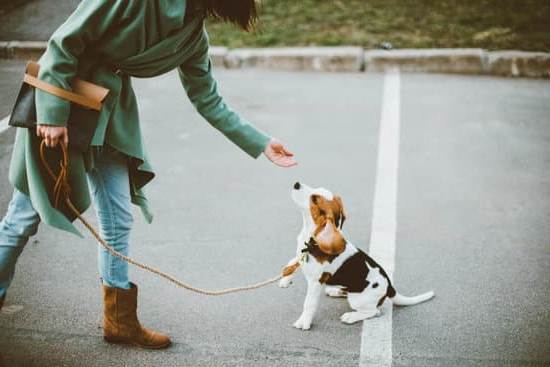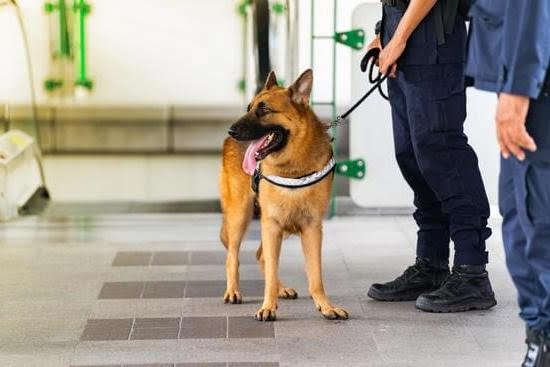How often to train a dog is a crucial aspect of responsible pet ownership. Regular training not only helps in building a strong bond between you and your furry friend, but it also ensures their safety and well-being. Understanding the importance of regular training is essential for every dog owner, as it sets the foundation for a happy and harmonious relationship with your canine companion.
Identifying your dog’s training needs is the first step towards establishing an effective training routine. Every dog is unique, with different temperaments, energy levels, and personalities. It is important to assess your dog’s individual training needs and tailor your approach accordingly. By understanding what motivates and challenges your dog, you can create a customized training plan that suits their specific requirements.
Setting realistic training goals plays a significant role in determining how often to train your dog. Whether you are teaching basic commands or addressing specific behavioral issues, having measurable and achievable goals will help you stay on track with your training schedule. It’s important to be patient and consistent when setting expectations for your dog, as progress takes time and effort.
Identifying Your Dog’s Training Needs
When it comes to determining how often to train a dog, it is important to first understand your dog’s individual training needs. Every dog is different and will have varying levels of energy, intelligence, and ability to focus. Certain breeds may require more frequent and intense training sessions, while others may be content with less structured training. Additionally, a dog’s age and past experiences can also influence their training needs.
To properly identify your dog’s training needs, take the time to observe their behavior and temperament. Consider factors such as their attention span, eagerness to learn, and any behavioral issues that may need addressing. By understanding your dog’s unique traits and tendencies, you can tailor a training program that best suits their individual requirements.
It is also important to consider your own goals and expectations for your dog’s behavior. Whether you simply want a well-behaved family pet or are working towards specific obedience or agility goals, these objectives will play a role in determining the frequency and intensity of your dog’s training regimen.
Ultimately, by taking the time to identify your dog’s specific training needs, you can create an effective and tailored approach to training that will help you determine how often to train a dog based on their individual requirements.
Setting Realistic Training Goals
When it comes to training your dog, it is important to set realistic training goals that align with your dog’s abilities and needs. Whether you are teaching basic commands or addressing specific behavior issues, having clear and achievable goals will help guide your training sessions.
To set realistic training goals for your dog, consider their breed, age, and temperament. For example, a high-energy breed may require more frequent and challenging training sessions compared to a low-energy breed. Additionally, puppies may have shorter attention spans and require more frequent but shorter training sessions compared to adult dogs.
Here are some tips for setting realistic training goals for your dog:
- Determine the specific behaviors or commands you want to teach your dog
- Break down the training process into manageable steps
- Set a timeline for when you expect your dog to learn and master each behavior or command
By setting realistic goals, you can track your dog’s progress and adjust your training frequency as needed. This approach will also help prevent frustration and burnout for both you and your dog.
Remember that every dog is unique, so it is important to tailor your training goals to suit your individual dog’s abilities and personality. Consistency and patience are key when working towards these goals, so be sure to celebrate small victories along the way.
Establishing a Consistent Training Schedule
Training a dog requires consistency and dedication. Setting a consistent training schedule is essential in ensuring that your dog understands and retains the commands and behaviors you are teaching. One of the most common questions dog owners have is how often to train their dogs. The answer to this question depends on various factors, including the age and breed of your dog, as well as their individual learning pace.
Setting a consistent training schedule involves dedicating a specific time each day for training sessions. Whether it’s obedience training, leash training, or any other form of training, consistency is key. Dogs thrive on routine, so having a regular training schedule helps them understand what is expected of them and fosters better learning outcomes.
When establishing a consistent training schedule, it’s important to consider the length of each training session. Dogs have short attention spans, especially puppies, so keeping training sessions short (10-15 minutes) but frequent throughout the day can be more effective than one long training session. For adult dogs, longer but still focused sessions (20-30 minutes) may be appropriate once or twice a day.
Consistent reinforcement and repetition are essential in maintaining the behavior you want to see in your dog. By sticking to a consistent training schedule and incorporating daily training into your routine, you are effectively communicating with your dog and strengthening your bond with them while also encouraging positive behavior.
Incorporating Daily Training Into Your Routine
Training your dog on a daily basis is crucial in ensuring that they understand and retain the behaviors you are trying to teach them. Establishing a consistent routine will help reinforce positive habits and minimize any confusion or regression in their training. Here are some tips for successfully incorporating daily training into your routine:
1. Set aside dedicated time: Allocate at least 15-30 minutes each day specifically for training sessions with your dog. This can be broken up into shorter sessions throughout the day to keep your pet engaged and focused.
2. Integrate training into everyday activities: Incorporate training exercises into daily activities such as meal times, walks, playtime, and grooming. For example, you can use meal times as an opportunity to practice obedience commands like sit, stay, and come.
3. Utilize positive reinforcement: Make sure to use treats, praise, and rewards to encourage good behavior during training sessions. Positive reinforcement will motivate your dog to learn and respond positively to commands.
Consistency is key when it comes to effective dog training. By integrating daily training into your routine, you can build a strong foundation for your dog’s behavior and ensure steady progress in their development. Remember that every dog is unique, so it’s important to tailor the frequency of training to suit their individual needs and abilities.
Recognizing Signs of Overtraining
It is essential to pay close attention to your dog’s behavior during training sessions as well as throughout the day. If you notice any of these signs, it may be an indication that your dog needs a break from rigorous training. Just like humans, dogs need rest and recovery time to prevent burnout and maintain a healthy state of mind.
Furthermore, overtraining can also result from the use of incorrect training techniques or excessive physical exertion. It is important to evaluate how often you train your dog and ensure that it aligns with their individual needs and abilities. Taking note of these signs will help you determine whether the current training schedule is suitable for your furry friend.
| Signs of Overtraining | Impact on Dogs |
|---|---|
| Increased irritability | Stress and anxiety |
| Reluctance to obey commands | Mental fatigue |
| Decrease in appetite or energy levels | Physical injuries due to strain |
| Seeking isolation | Burnout and emotional distress |
Implementing Effective Training Techniques
Positive Reinforcement
Using positive reinforcement is a key aspect of effective dog training. This technique involves rewarding your dog with treats, praise, or toys when they exhibit the desired behavior. Positive reinforcement helps to associate the behavior with a positive outcome, making it more likely for your dog to repeat that behavior in the future. It is important to use rewards that are meaningful to your dog and to deliver them promptly after the desired behavior is displayed.
Consistency and Patience
Consistency and patience are essential when implementing effective training techniques for your dog. It’s important to be consistent in your commands, expectations, and rewards so that your dog can understand what is expected of them. Additionally, patience is crucial as dogs may take time to grasp new commands or behaviors. Avoid becoming frustrated and maintain a calm and patient demeanor during training sessions.
Understanding Your Dog’s Communication
Effective training techniques also involve understanding your dog’s communication cues. Dogs communicate through body language, vocalizations, and other behaviors. By learning to recognize these cues, you can better understand your dog’s needs and reactions during training sessions. This understanding can help you adjust your training approach and techniques to better suit your dog’s individual needs.
By incorporating these effective training techniques into your sessions, you can enhance the overall effectiveness of your training regimen regardless of how often you train a dog. Remember that every dog is unique, so it may take some trial and error to determine which techniques work best for your furry friend.
Adapting Training Frequency to Your Dog’s Age and Breed
When it comes to training your dog, the frequency of training sessions should be adapted to the age and breed of your furry companion. Different dogs have different needs and capabilities, so it’s important to tailor their training schedule accordingly.
Age Considerations
Puppies have a shorter attention span and may require more frequent but shorter training sessions. As they get older, you can gradually increase the duration of each session and reduce the frequency. Adult dogs can handle longer and less frequent training sessions, while senior dogs may need gentler exercises and shorter sessions due to physical limitations.
Breed Differences
Certain breeds are known for their intelligence and eagerness to learn, while others may be more independent or stubborn. Breeds like Border Collies, Poodles, and German Shepherds thrive on mental stimulation and may benefit from more frequent training sessions. On the other hand, breeds like Chow Chows or Afghan Hounds may not respond well to intense or repetitive training regimens.
Observing Your Dog’s Response
Regardless of age or breed, it’s crucial to pay attention to your dog’s response to training. If you notice that your dog is becoming uninterested, distracted, or stressed during training sessions, it may be a sign that you need to adjust the frequency of training. On the other hand, if your dog is showing enthusiasm and progress, you can consider reducing the frequency as they become more skilled in their learned behaviors.
By adapting the frequency of your dog’s training to their age and breed characteristics, you can ensure that they receive the appropriate amount of mental stimulation without feeling overwhelmed or disengaged.
Adjusting Training Frequency Based on Positive or Negative Behavior
When it comes to training frequency, it’s important to pay attention to your dog’s behavior and adjust the training schedule accordingly. Positive behavior, such as quick learning, willingness to follow commands, and overall good behavior, may indicate that your dog is ready for more advanced training or that they need less frequent sessions.
On the other hand, negative behavior, such as disobedience, resistance to training, or signs of stress during sessions, may signal that you need to slow down the training frequency or reassess your methods.
It’s essential to constantly evaluate your dog’s progress and be flexible with the training schedule. For example, if you notice that your dog is easily mastering new commands and showing enthusiasm for training sessions, you may consider increasing the frequency of these sessions. Conversely, if you see signs of reluctance or frustration in your dog during training, it may be time to give them a break and reduce the number of sessions per week.
As a responsible pet owner and trainer, it’s crucial to observe how your dog responds to different training frequencies. This will help you tailor their training routine to best suit their needs and prevent any potential negative impact on their mental and emotional well-being. Remember that every dog is unique, so being attentive to their individual responses is key in determining how often they should be trained.
| Positive Behavior | Negative Behavior |
|---|---|
| Quick learning and mastery of commands | Disobedience and resistance |
| Enthusiastic participation in training sessions | Signs of stress or frustration during training |
| Willingness to follow commands | Lack of attention or engagement in training |
Seeking Professional Guidance for Training Frequency and Methods
In conclusion, understanding how often to train a dog is essential for successfully shaping their behavior and building a strong relationship. Regular training not only helps in creating a well-behaved and obedient pet but also provides mental stimulation and physical exercise. By identifying your dog’s specific training needs and setting realistic goals, you can establish a consistent training schedule that fits into your daily routine.
It’s important to incorporate daily training into your interactions with your dog, using positive reinforcement to encourage desired behavior. However, it’s crucial to recognize signs of overtraining, such as a lack of enthusiasm or avoidance of training sessions. Implementing effective training techniques, adapting the frequency based on your dog’s age and breed, and adjusting based on their behavior are all important factors in determining the right training schedule.
For those who may be unsure about how often to train their dog or what methods to use, seeking professional guidance is always an option. A professional trainer can provide personalized advice tailored to your dog’s unique needs and offer valuable insights into the most effective training methods.
They can also help address any challenges or concerns you may have regarding your dog’s behavior. Ultimately, by taking into account all these factors and seeking expert advice when needed, you can ensure that your furry friend receives the proper amount of training while maintaining a happy and healthy bond between both of you.
Frequently Asked Questions
How Many Hours a Day Should You Train Your Dog?
The ideal amount of time to train your dog each day is around 20-30 minutes. Too much training can be overwhelming, while too little may not yield the desired results.
Is Dog Training Once a Week Enough?
Training your dog once a week may not be enough to effectively teach them new behaviors and commands. Consistency and regular practice are key to successful training.
How Often Should I Train My New Dog?
For a new dog, it is recommended to train them multiple times a day for short periods. This can help them learn quickly and also bond with their owner through positive reinforcement techniques.

Welcome to the blog! I am a professional dog trainer and have been working with dogs for many years. In this blog, I will be discussing various topics related to dog training, including tips, tricks, and advice. I hope you find this information helpful and informative. Thanks for reading!





